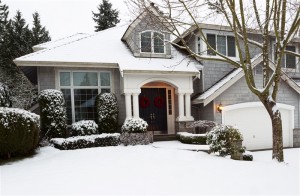Winterizing Your Home: The Ultimate Checklist
The winter season can bring with it a lot of danger when it comes to your home and safety. Loss of power can mean you and your family are off the grid for days on end with only the food and water you already have. Common scenarios include being snowed in and unable to get out of the driveway. While most of the time winter storms are forewarned, sometimes things happen that we cannot predict, so being prepared is the best way to protect yourself, your home, and your family.
Here are some ways you can ensure your home is ready for winter so you have a better chance of thriving.
Winterizing Your Home
1. Insulate the walls and attics of your home to help lengthen the life of your fuel supply. Caulk and weather strip all doors and windows, and if you do not have storm doors and windows, cover them with plastic.
2. Don’t forget to winterize outdoor structures as well such as the barn or shed that can provide shelter for animals, equipment, and even family and neighbors. Clear all gutters and check and repair any roof leaks well in advance. Cut down any tree branches that have the potential to fall on the roof.
3. Check chimneys annually and if necessary, have them cleaned as well as any other heating equipment.
4. Thoroughly insulate all pipes with the proper insulation. If you cannot get it, use newspaper and plastic. Make sure your faucets drop slightly to avoid frozen or bursting pipes.
5. Be sure any equipment you own that burns fuel is kept outside or in a very well-ventilated area.
6. Always have working fire extinguishers, and educate everyone on how to use them properly. House fires are common in the winter when people are looking for other ways to keep warm such as using a fire without paying attention to the needed safety precautions.
7. Be sure you know where water valves are so you can turn them off if a pipe does burst.
8. Find out how well your home can handle heavy snow on the roof. You can hire a contractor to help you determine this.
9. Use rock salt to help melt ice on sidewalks and other walkways to avoid slips and falls, and use sand to help improve traction.
10. Make sure you have a quality snow shovel and any other necessary equipment.
11. Always be sure you have plenty of fuel needed to heat the home. If you get stuck inside, it could be a long time before you’re able to replenish it. Also have a good amount of dry seasoned wood to make a fire, use in the fireplace, or in a wood burning stove.
12. Avoid travel in inclement winter weather. If you must travel, be sure you have a complete disaster kit in your car including winter related items you might need.

